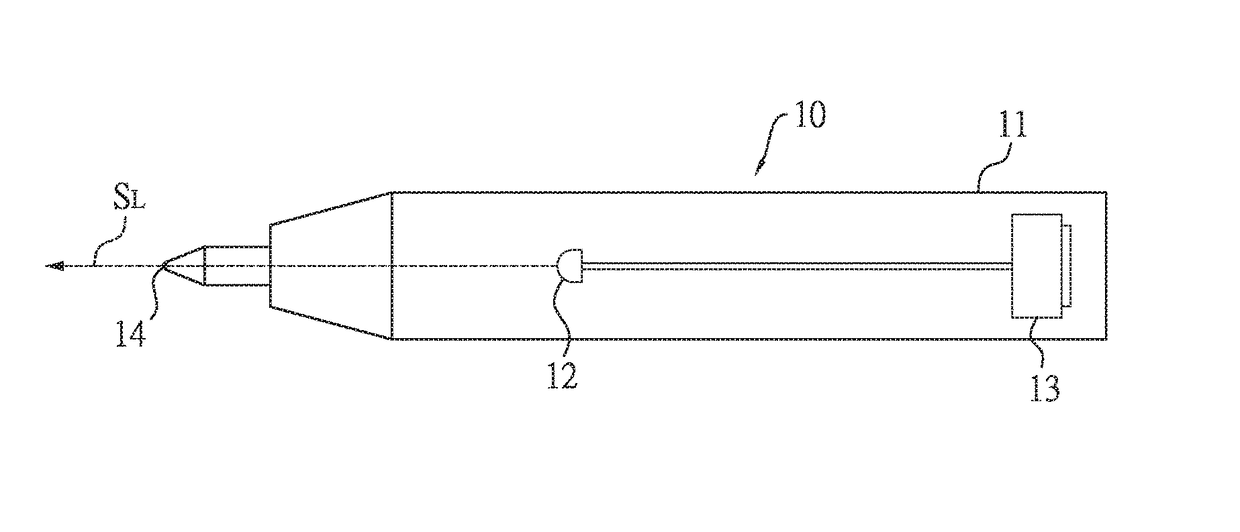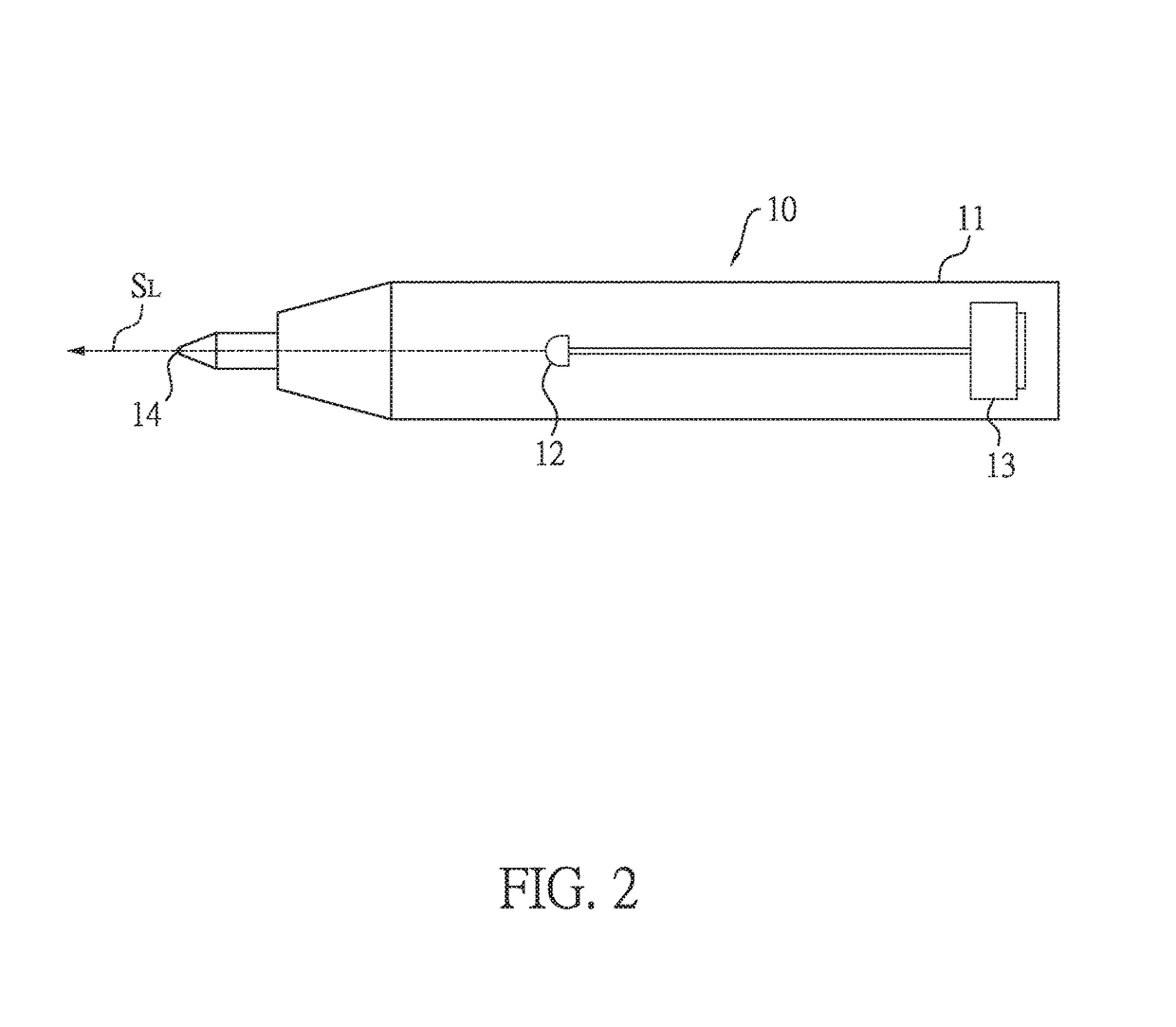Transmitter pen positioning system
a positioning system and transmitter pen technology, applied in the field of positioning systems, can solve the problems of generating unwanted audible noise to users, requiring more power, and limited real-time update frequency of the transmitter's location, so as to simplify the system and reduce costs , the effect of reducing consumption
- Summary
- Abstract
- Description
- Claims
- Application Information
AI Technical Summary
Benefits of technology
Problems solved by technology
Method used
Image
Examples
Embodiment Construction
[0022]Reference will now be made to the drawing figures to describe the present disclosure in detail.
[0023]As shown in FIG. 1, in this embodiment, the transmitter pen positioning system is, but not limited to, applied to a writing board 40 with a writing surface 41, such as a whiteboard. The transmitter pen positioning system includes a transmitter pen 10, at least two photo-receiving modules 20, and a signal processing unit 30.
[0024]As shown in FIG. 2, the transmitter pen 10 has a pen body 11, a light emitting element 12, a power supplying element 13, and a pointing tip 14. The light emitting element 12 and the power supplying element 13 are disposed in the pen body 11. Also, the light emitting element 12 can be, but not limited to, a light-emitting diode (LED) or a laser diode. The power supplying element 13 can be, but not limited to, a battery, such as a coin battery also called a button cell battery. Also, the power supplying element 13 is used to supply required power to the t...
PUM
 Login to View More
Login to View More Abstract
Description
Claims
Application Information
 Login to View More
Login to View More - R&D
- Intellectual Property
- Life Sciences
- Materials
- Tech Scout
- Unparalleled Data Quality
- Higher Quality Content
- 60% Fewer Hallucinations
Browse by: Latest US Patents, China's latest patents, Technical Efficacy Thesaurus, Application Domain, Technology Topic, Popular Technical Reports.
© 2025 PatSnap. All rights reserved.Legal|Privacy policy|Modern Slavery Act Transparency Statement|Sitemap|About US| Contact US: help@patsnap.com



